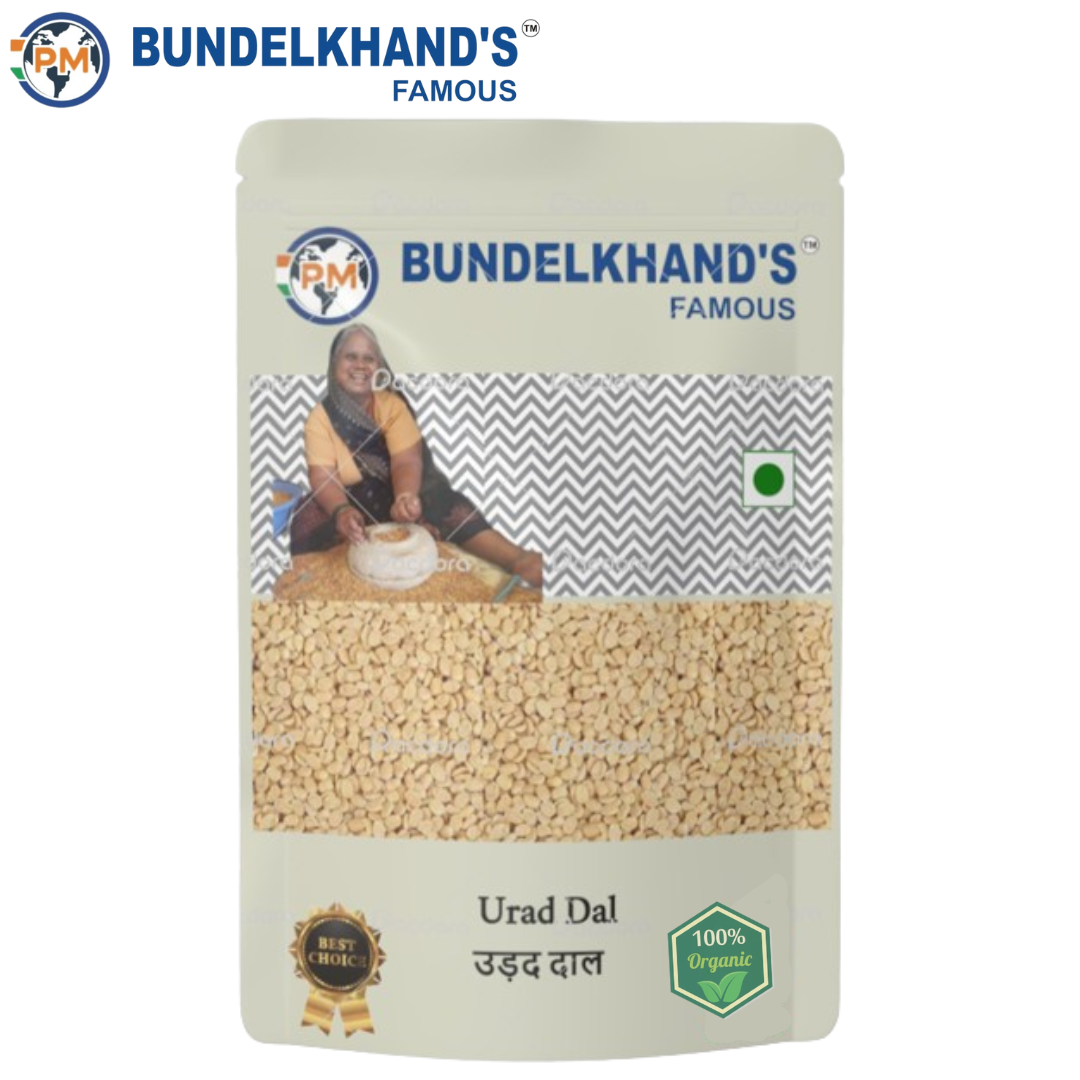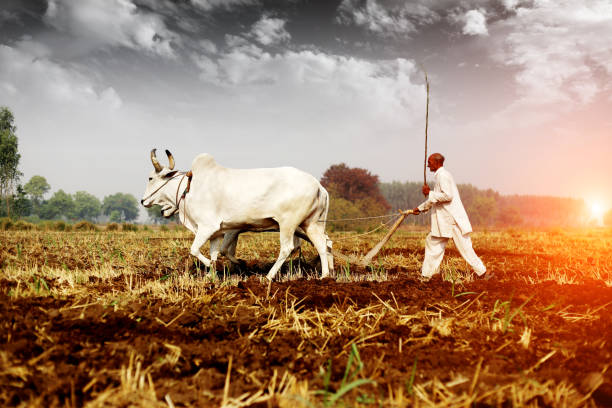Urad Dal, also known as black gram, is an integral part of Indian cuisine, celebrated for its rich flavor and impressive nutritional profile. From traditional dishes to modern innovations, Urad Dal offers culinary versatility and numerous health benefits. This blog will explore the origins, nutritional value, culinary uses, and cultural significance of Urad Dal, highlighting its importance in Bundelkhand and beyond. For premium quality Urad Dal and other organic products, visit www.bundelkhandsfamous.com.
#UradDal #BlackGram #Nutrition #CulinaryUses #Bundelkhand #OrganicProducts
 1. Origin and History of Urad Dal
1. Origin and History of Urad Dal
Ancient Roots
Urad Dal has been cultivated in India for over 4,000 years, with its origins tracing back to the Indian subcontinent. It is a staple in Indian kitchens and a significant crop in regions like Bundelkhand, where it thrives in the local climate and soil conditions.
#History #AncientCrop #IndianCuisine
Role in Indian Agriculture
Urad Dal plays a vital role in Indian agriculture, offering numerous benefits:
- Soil Enrichment: As a legume, Urad Dal enriches the soil by fixing atmospheric nitrogen, enhancing soil fertility.
- Crop Rotation: Often used in crop rotation systems, it helps maintain soil health and productivity.
- Economic Importance: A crucial cash crop for farmers, Urad Dal contributes significantly to the agricultural economy.
#Agriculture #SoilHealth #EconomicImportance
2. Nutritional Profile of Urad Dal
Key Nutrients
Urad Dal is a powerhouse of essential nutrients:
- Protein: High in protein, making it an excellent source for vegetarians.
- Carbohydrates: Provides a steady source of energy.
- Fiber: Rich in dietary fiber, promoting digestive health.
- Fats: Contains healthy fats that support heart health.
#Nutrition #HighProtein #Fiber #HealthyFats
Micronutrients
Urad Dal is also rich in vital micronutrients:
- Iron: Supports red blood cell production and prevents anemia.
- Calcium: Essential for bone health.
- Potassium: Regulates blood pressure and supports cardiovascular health.
- Magnesium: Important for muscle and nerve function.
#Vitamins #Minerals #Iron #Calcium #Potassium
Health Benefits
The consumption of Urad Dal offers several health benefits:
- Digestive Health: High fiber content aids digestion and prevents constipation.
- Bone Health: Calcium and magnesium strengthen bones and teeth.
- Heart Health: Potassium helps maintain heart health by regulating blood pressure.
- Energy Boost: Provides sustained energy due to its complex carbohydrates.
#HealthBenefits #DigestiveHealth #BoneHealth #HeartHealth
3. Cultivation and Harvesting of Urad Dal
Ideal Growing Conditions
Urad Dal requires specific conditions for optimal growth:
- Temperature: Prefers warm climates with temperatures between 25-35°C.
- Rainfall: Requires moderate rainfall, around 600-800 mm annually.
- Soil Type: Thrives in loamy or sandy soils with good drainage.
#Farming #GrowingConditions #ClimateAdaptation
Farming Practices
- Land Preparation: Proper tilling and leveling of the land for good seedbed preparation.
- Sowing: Seeds are sown directly into the soil, maintaining adequate spacing for plant growth.
- Irrigation: Requires minimal irrigation, mainly during critical growth stages like flowering and pod formation.
- Pest and Weed Management: Regular monitoring and control of pests and weeds to ensure healthy crop growth.
- Fertilization: Balanced application of fertilizers to enhance yield and soil fertility.
#FarmingPractices #Irrigation #WeedControl #Fertilization
Harvesting
Urad Dal is typically harvested 80-120 days after sowing, depending on the variety and climate conditions. Harvesting is done when the pods are fully mature and dry.
#Harvesting #AgriculturalPractices #YieldManagement
Post-Harvest Processing
- Drying: The harvested pods are sun-dried to reduce moisture content.
- Threshing: The dried pods are threshed to separate the grains.
- Cleaning and Sorting: The grains are cleaned and sorted to ensure quality.
- Packaging: Packaged in moisture-proof bags to maintain freshness.
#PostHarvestProcessing #Drying #Packaging
4. Culinary Uses of Urad Dal
Traditional Dishes
Urad Dal is a staple in Indian cuisine, used in various traditional dishes:
- Dal Makhani: A rich and creamy dish made with Urad Dal and kidney beans, simmered with spices and butter.
- Idli and Dosa Batter: Urad Dal is a key ingredient in the fermentation process of idli and dosa batter, providing the right texture and flavor.
- Vada: Deep-fried savory fritters made from Urad Dal batter, often enjoyed as a snack or breakfast item.
- Punjabi Dal: A popular North Indian dish, cooked with spices and served with rice or roti.
#IndianCuisine #DalMakhani #Idli #Dosa #Vada
Modern and Innovative Dishes
Urad Dal is also used in modern and innovative recipes:
- Urad Dal Soup: A nutritious and hearty soup made with Urad Dal, vegetables, and spices.
- Urad Dal Salad: A healthy salad featuring cooked Urad Dal, mixed with fresh vegetables and a tangy dressing.
#ModernCuisine #UradDalSoup #UradDalSalad #InnovativeRecipes
Cooking Tips and Techniques
- Soaking: Soaking Urad Dal for a few hours before cooking reduces cooking time and enhances digestibility.
- Spice Combinations: Using a blend of cumin, coriander, turmeric, and asafoetida elevates the flavor of Urad Dal dishes.
- Cooking Method: Slow cooking on low heat preserves its nutritional value and taste.
#CookingTips #Spices #Soaking #CookingMethods
5. Economic and Social Importance
Economic Benefits
Urad Dal is economically significant for farmers and traders:
- Income Source: A lucrative cash crop for farmers, contributing to their livelihood.
- Export Potential: Urad Dal is exported to various countries, generating foreign exchange earnings.
- Employment Opportunities: Provides employment in farming, processing, and distribution sectors.
#EconomicImpact #IncomeSource #Export #Employment

Social Significance
Urad Dal plays a vital role in social and cultural contexts:
- Community Development: The cultivation and trade of Urad Dal support community development and economic growth.
- Women Empowerment: Women often participate in the production and sale of Urad Dal, promoting gender equality and empowerment.
#SocialImpact #CommunityDevelopment #WomenEmpowerment
Local and Global Market
Urad Dal has a prominent presence in local and global markets:
- Demand and Supply: High demand for Urad Dal ensures a steady supply chain.
- Price Stability: Prices fluctuate based on production costs, demand, and market conditions.
- Government Support: Policies like minimum support prices and subsidies encourage Urad Dal cultivation.
#MarketTrends #PriceStability #GovernmentSupport
6. Cultural Significance of Urad Dal
Traditional and Religious Importance
Urad Dal holds cultural and religious significance in various communities:
- Festivals and Celebrations: Used in traditional dishes during festivals and celebrations, symbolizing prosperity and abundance.
- Rituals and Offerings: Often used in religious rituals and offerings, reflecting its sacred status.
- Traditional Recipes: Passed down through generations, Urad Dal recipes preserve cultural heritage and culinary traditions.
#CulturalSignificance #Festivals #Rituals #Traditions
Urad Dal in Literature and Folklore
Urad Dal is featured in literature, folklore, and traditional songs:
- Proverbs and Sayings: Urad Dal is mentioned in various proverbs and sayings, highlighting its cultural importance.
- Folktales and Stories: Often depicted in stories as a staple food, emphasizing its role in daily life and community bonding.
- Culinary Narratives: Stories and songs celebrate its role in regional cuisines, showcasing its versatility and significance.
#Literature #Folklore #CulinaryNarratives
7. Future Prospects and Sustainability
Addressing Challenges
The future of Urad Dal production and consumption faces several challenges:
- Climate Resilience: Developing climate-resilient varieties and promoting sustainable farming practices are essential to mitigate climate change impacts.
- Food Security: Ensuring access to affordable and nutritious Urad Dal is crucial for addressing malnutrition and hunger.
- Market Stability: Enhancing market stability through transparent pricing mechanisms, supply chain efficiencies, and policy support is vital for sustaining production and trade.
#FutureProspects #Challenges #ClimateResilience #FoodSecurity
Embracing Innovations
Innovation and technological advancements offer transformative opportunities for the Urad Dal sector:
- Digital Agriculture: Utilizing digital tools and technologies like precision farming and data analytics can optimize production and improve decision-making.
- Value Chain Integration: Strengthening value chain integration and fostering collaboration among stakeholders can enhance efficiency, quality, and market access.
- Consumer Awareness: Promoting consumer awareness about the nutritional benefits and culinary versatility of Urad Dal can boost demand and encourage healthy eating habits.
#Innovations #DigitalAgriculture #ValueChainIntegration #ConsumerAwareness
Conclusion
Urad Dal is a versatile and nutritious ingredient that has nourished generations and contributed to India’s rich culinary heritage. From its historical roots to its modern applications, Urad Dal continues to play a vital role in our diets, cultures, and economies. By understanding its value and potential, we can ensure that Urad Dal remains a cherished and sustainable part of our future. Whether you’re a farmer, cook, consumer, or enthusiast, Urad Dal invites you to explore its rich heritage and possibilities, moving towards a healthier and more sustainable world.
For high-quality organic Urad Dal and other agricultural products, visit Bundelkhand’s Famous, your trusted source for authentic and premium organic products.
#UradDal #Sustainability #CulinaryHeritage #OrganicProducts #BundelkhandFamous

Your point of view caught my eye and was very interesting. Thanks. I have a question for you.
I don’t think the title of your article matches the content lol. Just kidding, mainly because I had some doubts after reading the article.
I don’t think the title of your article matches the content lol. Just kidding, mainly because I had some doubts after reading the article.
Your point of view caught my eye and was very interesting. Thanks. I have a question for you.
Your point of view caught my eye and was very interesting. Thanks. I have a question for you.
Can you be more specific about the content of your article? After reading it, I still have some doubts. Hope you can help me.
I don’t think the title of your article matches the content lol. Just kidding, mainly because I had some doubts after reading the article. https://www.binance.com/zh-CN/join?ref=VDVEQ78S
Your point of view caught my eye and was very interesting. Thanks. I have a question for you.
Thank you for your sharing. I am worried that I lack creative ideas. It is your article that makes me full of hope. Thank you. But, I have a question, can you help me?
Can you be more specific about the content of your article? After reading it, I still have some doubts. Hope you can help me.
Thank you for your sharing. I am worried that I lack creative ideas. It is your article that makes me full of hope. Thank you. But, I have a question, can you help me? https://accounts.binance.com/ar-BH/register?ref=V2H9AFPY
I don’t think the title of your article matches the content lol. Just kidding, mainly because I had some doubts after reading the article.
Thanks for sharing. I read many of your blog posts, cool, your blog is very good.
Can you be more specific about the content of your article? After reading it, I still have some doubts. Hope you can help me.
Can you be more specific about the content of your article? After reading it, I still have some doubts. Hope you can help me.
Your article helped me a lot, is there any more related content? Thanks!
Your article helped me a lot, is there any more related content? Thanks!
Your point of view caught my eye and was very interesting. Thanks. I have a question for you.
Your point of view caught my eye and was very interesting. Thanks. I have a question for you.